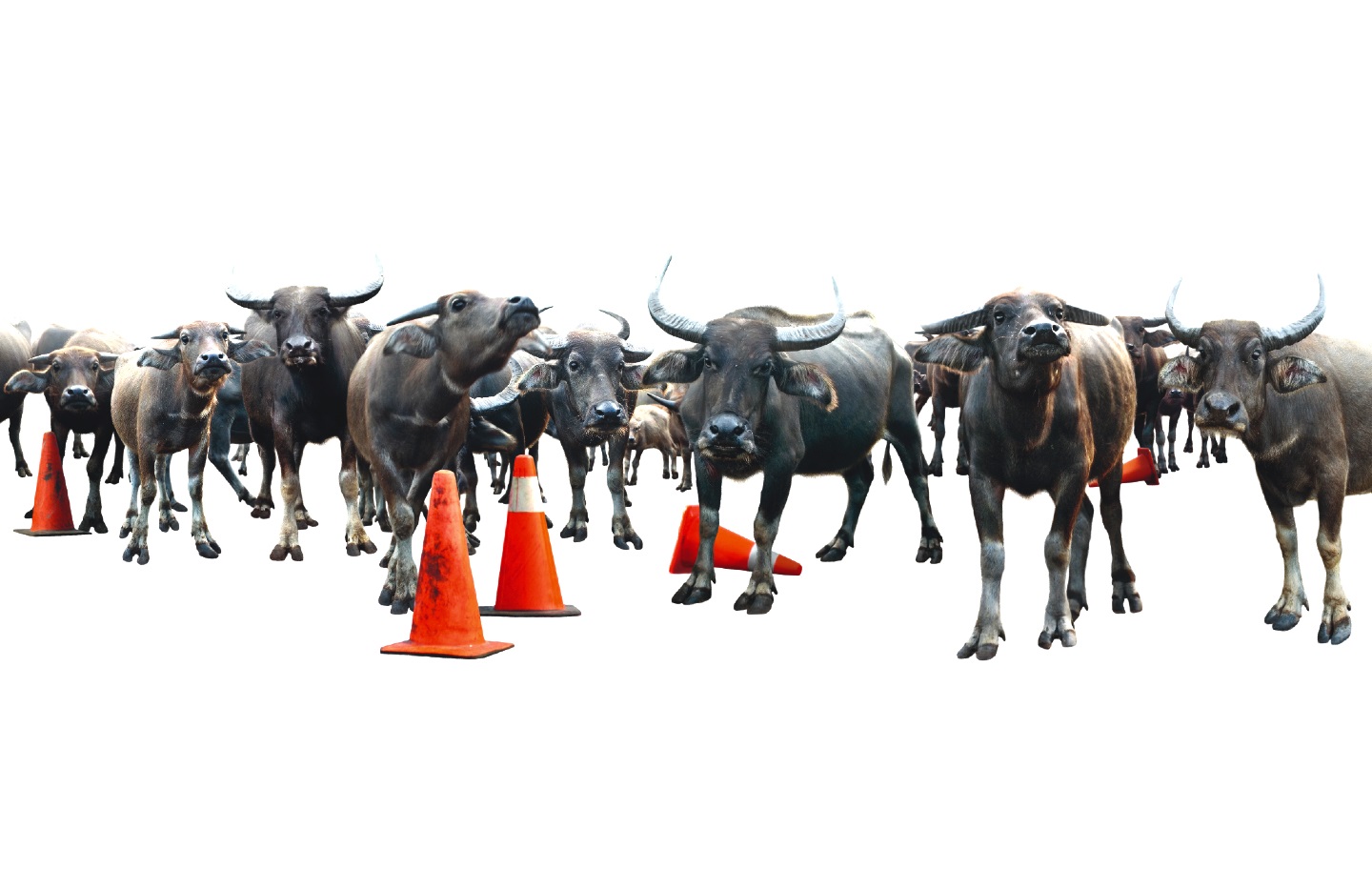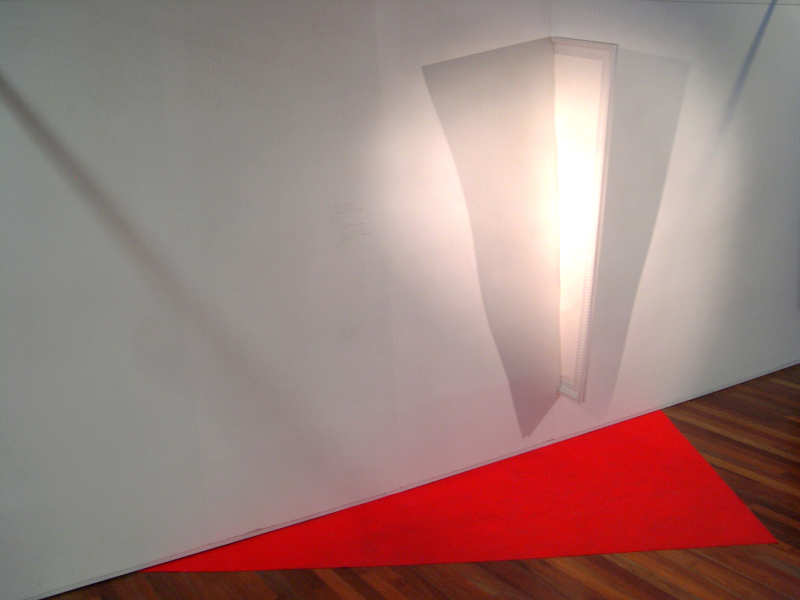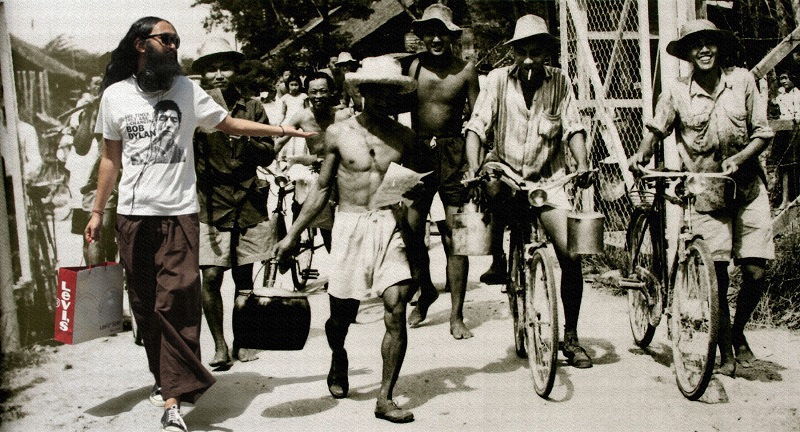
Yee I-Lann, Kerbau (2007) (Photo: Yee I-Lann)
It may be the start of a new decade, but just last week Malaysians were served with a reminder that we ended 2019 with much of the same old, same old at play. Case in point is the much ado over the introduction of Jawi script lessons in schools, which once again brought to the fore ever-present racial and religious tensions.
Perhaps this country will always navigate these red lines, a reminder of what bubbles underneath the surface that, time and again, create fissures which undermine the multi-racial nation we proudly claimed to have built.
And in this Malaysia Baru, it has become more apparent that while we are not where we once were, we are not quite where we should be. It is a precarious and somewhat wild territory where we often feel like being in limbo — sometimes surrealistic, but most of the time proven to be, again, familiar in terms of socio-political language, issues and lack of will towards meaningful resolution.
One only needs to take a look at artworks in The Body Politic and the Body for confirmation. An exhibition co-presented by Ilham Gallery and Singapore Art Museum, this collaboration — a first — sees SAM bringing in seven contemporary works by Malaysian artists from its collection, carefully selected to create conversation with newly commissioned works and more on loan from other local artists.
yap_sau_bin_the_grand_phantom_narrates_2004_collection_of_singapore_art_museum_image_courtesy_of_the_artist_1.jpg

The title gives an idea of the central theme of the show, which is the body, here explored both in the macro and micro senses of the word — the collective entity of Malaysian society and the individual, a subjective body.
June Yap, SAM director of curatorial, programmes and publications, says the institutional collaboration with Ilham is not just about showcasing Malaysian works from their collection here, but by bringing them back to home ground, they hope to create a conversation for the local audience.
We start with Yap Sau Bin’s 2004 The Grand Phantom Narrates, which not only physically dominates the entrance of the exhibition space at Ilham, but also offers a conceptual warming-up, if you will, of thinking in terms of the collective and the individual.
The installation, which features a gilded frame plunged diagonally through a white wall — one side of the framed canvas is painted white while on the other side, the protruding part is rendered in red — also has a red carpet placed beneath. By the artist’s own admission, it is a layered work that in this context not only touches on cultural power, but also questions who controls the narrative.
Interestingly, the work was inspired by the 2003 resignation of the then prime minister Tun Dr Mahathir Mohamad, thus alluding the “grand phantom” to the institution and executive. Looking at it now, with Tun Mahathir back in power, one cannot help but ponder the question: How has his narrative shaped us all, especially now that his “Wawasan 2020” blueprint is supposed to come to fruition?
We may not have answers for the future, but history teaches us to look to the past for insight. Ahmad Fuad Osman would agree, his tongue-in-cheek project Recollections of Long Lost Memories (2007) featuring a “time traveller” persona. Having produced the series to commemorate the 50th anniversary of Malaysia’s independence, the photo slide show reveals the intervention of an inserted character to create “false memories”.
ahmad_fuad_osman_recollections_of_long_lost_memories_slide_2007_collection_of_sam_image_courtesy_of_the_artist.jpg

Being someone fixated by historical narratives, Fuad’s practice often challenges the notion of the official and mainstream being the correct version, while highlighting the forgotten and those sidelined by their lack of opportunity to be heard or remembered.
One of these would be the Orang Ulu warrior created by Bayu Utomo Radjikin, titled Lang Kacang (1991), whose seemingly silent scream and anguished expression, representing himself and his community is eloquent, if bleak.
Everyone loves an underdog story, or one of the individual triumphing over the institution. But as we stared at Yee I-Lann’s Kerbau (2007) — loaned by the artist herself — it is clear that one cannot do without the other when it comes to bringing transformation. And at times, the individual has to become the collective to achieve that goal.
The humble buffalo, a symbol often used in the Asean region as a personification of our peoples and cultures, is exhorted here for its lesser qualities: that of being bull-headed and stubborn. Yee pairs the buffalos with images of road cones, denoting obstruction and a lack of order as they crowd the space. But the cones also represent a sense of temporariness — the barriers here are not permanent, the disruption is only until the objective is achieved, or a new order is created, a work in progress.
This idea corresponds to Chi Too’s work, 13/05/1969, Reformasi, Bersih 2.0. The minimalist canvases of road-marking paint and bitumen are a response to the phrase once used to describe mass movements, “bukan budaya kita” (not our culture).
The three pieces exhibited are part of a larger 50-works series chronicling the history of key movements and events in Malaysian history that involved taking to the streets. Of course, most prominently are the May 13 racial riots, the Reformasi movement of 1998 and the Bersih 2.0 rally in 2012. Too traces the sites and grounds of where these events took place, as a form of road-mapping.
Underscoring the power of the individual turned collective is Wong Hoy Cheong’s Tapestry of Justice (1998-2004), for which he spent six years collecting over 7,000 thumbprints in support of the repeal of the Internal Security Act. The beautifully hung tapestry sits as a showpiece of individual autonomy.
wong_hoy_cheong_tapestry_of_justice_1998-2004_collection_of_the_artist_image_courtesy_of_ilham_gallery.jpg

Yet, Redza Piyadasa’s 1970 installation, forthrightly titled May 13, 1969, holds a literal mirror up to the reality that we Malaysians still live with the post- watershed moment (and the events leading up to it) in our nation’s socio-political history. The sobering work was burnt by the late artist a year after its only exhibition, as if in mourning. He recreated it in 2006 and the piece is now owned by SAM.
Not quite a rosy reflection, is it? Still, as one walks through the gallery — slowly, and with effort — one can discern the silver lining that connects each work, be it broader themes or individual reflections as seen in works by Simryn Gill, Hasanul Isyraf Idris and Nadiah Bamadhaj.
Some call it the Malaysian spirit, others may see hope. It may not have a clear name, but the sensation stirs nonetheless. Perhaps Sweden-based performance artist Chia Chuyia and her newly commissioned work, Trace and Memory (2019), offers clarity.
Desiring to reconnect with her roots of growing up in Sekinchan, Selangor, she planted paddy stalks in a bed of soil, and during the show’s opening, created an imprint of herself lying in it. She wrote, “One’s roots can never be erased and stays with time …”
Even if what that means may differ and come with painful scars, the compass that points to home and our roots remains embedded. We may not clearly sense its presence or see it now, but so long as we seek, search for understanding and act — as these artists have done — to strengthen our own ties to the nation, may it keep us going forth.
'The Body Politic and the Body', Ilham Gallery, Level 5, Menara Ilham, Jalan Binjai, KL. Until April 12. Free admission. For more info, see here.
This article first appeared on Jan 6, 2020 in The Edge Malaysia.


